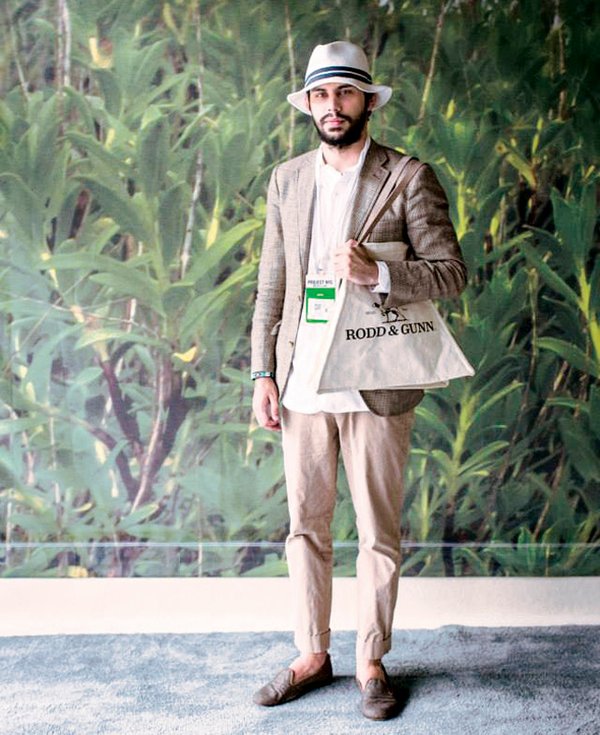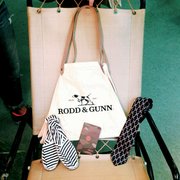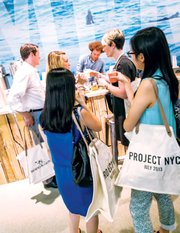IT’S NOT JUST A BAG
It’s Not Just a Bag: Brand Building at Trade Shows Is All in the Bag
Rod Williams used to serve New Zealand wine at trade-show booths for Rodd & Gunn, an Auckland-headquartered company, but when planning for the Project trade show in July 2013, Williams wanted something that would place his brand on the tip of every buyer’s tongue.
He found his solution in a bag.
Rodd & Gunn distributed around Project canvas bags bearing the brand’s name. Almost everybody entering the show picked up the Rodd & Gunn bag at Project’s information booths. If Rodd & Gunn was not at the tip of everyone’s tongue, it certainly was hanging off everyone’s shoulder.
“Having the bags gave us the opportunity to have conversations with people that we don’t know,” Williams said from his brand’s U.S. headquarters in Santa Cruz, Calif.
The bag, perhaps something akin to a welcome-wagon gift or a college-orientation care package, has always been a part of the trade-show scene. Trade-show production companies distribute them as something to hold the piles of look books, business cards and T-shirts inevitably picked up at a show.
But they have become much more important over the past few years, said Aaron Levant, founder of the Agenda trade show, which runs biannual trade shows in Long Beach, Calif.; Las Vegas; and New York.
For years, many brands grabbed attention by making their trade-show booths into grand productions, with theme park–like architecture and sumptuous interiors.
But in the past six years, the most influential trade shows have required that brands drop the baroque booths. The trade-show egalitarianism made it harder for any brand to stand out because trade-show rules required that booths be plain and feature no more than a rack of clothes, a table and a couple of chairs.
It leaves a brand with fewer avenues to make a splash. It’s a reason why the trade-show bag has become increasingly important. But it comes with a price tag.
New York–headquartered denim brand Better in Blue spent more than $100,000 for a run of 10,000 bags at the inaugural Liberty trade show in Las Vegas in July 2013. Better in Blue Brand Director Vince Gonzales estimated that the bags would have wholesaled for $45.
The denim brand thought it was crucial to make a statement at the highly anticipated show. “When you launch something, you have to make a big noise,” he said. In mid-2013, Better in Blue pitched the management of Liberty trade show on a branding vehicle. The denim company and the trade-show managers both decided that Better in Blue should produce bags for the show.
The design process for the bags started during a meeting where Liberty managers displayed bags that inspired them, including one from a past Project trade show and another that a Liberty staffer picked up in Japan.
After the meeting, Better in Blue designers combined some of the features of the bags shown at the meetings, then set out to make the bag with an overseas factory that Gonzales had been working with for a while.
The bag was more expensive than Gonzales anticipated, but he has no regrets about the branding exercise.
“It had straps, zippers, snaps and branding,” Gonzales said. “People were knocked out by the quality.”
Trade shows also do their own branding with bags. The Designers and Agents trade show does four trade events annually in Los Angeles and New York as well as a biannual show in Paris. D&A has a commitment to emerging and established independent designers as well as sustainable brands, so many of the trade-show bags use natural fibers, said Meryl Mandelbaum, creative director for D&A.
“We change them every season,” she said of the bags. “We only work in natural fibers, such as canvas, denim or linen. Our goal is that people would want to hold on the bag rather than discarding them after the trade shows.”
Mandelbaum works with production agents in designing the bags. Designs can be inspired by the original artwork for the branding of the show. “They’re designs that will make the simple tote bag more unique,” she said. “Frayed edges, more colors—it’s the same thing that goes into any design process.”
Trade-show bags are considered something of a billboard in the trade show, but if they are designed well, they can be used long after the trade show ends.
Diane Merrick has shopped various trade shows for decades, having run her self-named veteran Los Angeles boutique, Diane Merrick.
“Some of the bags I just leave behind because they’re not exciting,” she said. But if they are designed well and offer novelty, she will keep them for years. “Bags are the greatest selling point in the world,” she said.
























